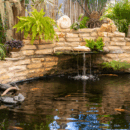The Evolution of Flower Pots

The world of gardening has undergone immense transformations over the millennia. One of the most fundamental elements of this change has been the container in which plants grow: the flower pot. As we delve into the history and evolution of flower pots, it becomes evident that these humble containers tell a larger story of human civilization, craftsmanship, and our connection to nature.
The Ancient Beginnings
Earthen Origins
The journey of flower pots begins in the ancient world. The earliest known pots were crafted from earth, specifically clay. These early clay pots were rudimentary, often handmade without the precision tools we have today. Yet, they served their purpose.
- The pots facilitated the growth of plants in urban settings, where soil was limited.
- They provided a means to transport plants from one place to another.
- Clay pots were breathable, which helped regulate moisture for the plant.
The Influence of Ancient Civilizations
Flower pots were not just tools for gardening but also reflected the artistic and cultural influences of the time.
- Egyptians – The ancient Egyptians used pots not just for plants but also for storing and transporting goods. Their designs were often elaborate, reflecting their deep appreciation for beauty and design.
- Romans and Greeks – These civilizations used terracotta pots, which were a bit more refined than their predecessors. They started introducing designs, shapes, and even painted pots that showed their affinity for art.
The Middle Ages and Renaissance: A Transition Period
The Introduction of Glazed Pots
The Middle Ages saw the introduction of glazed pots. This was a significant leap in the evolution of flower pots, as it offered several advantages:
- The glaze prevented the pot from being too porous, retaining more water for the plant.
- Glazed pots had a sheen and luster, making them more aesthetically pleasing.
- They were more resistant to external weather conditions, ensuring durability.
The Role of Trade
The Renaissance period saw an increase in trade, which played a pivotal role in the spread of different styles of flower pots across Europe.
- Italy – Known for its ornate designs and intricate detailing, Italian craftsmen began creating flower pots that were as much a work of art as they were functional items.
- Holland – The Dutch were significant traders, and their influence can be seen in the Delft blue pots, which were painted with intricate blue designs, a trend that remains popular even today.
The Modern Era
Industrialization and Mass Production
The industrial revolution brought about significant changes to the world of flower pots. The introduction of machinery meant that pots could now be mass-produced, making them more accessible and affordable to the average person.
- Materials diversified, with the introduction of plastic, metal, and even glass flower pots.
- The designs became more standardized due to mass production, but it also meant more variety in terms of shapes and sizes.
- Flower pots started being used not just outdoors but also as interior decor items.
Sustainable and Eco-Friendly Trends
With the increasing awareness of environmental concerns in the late 20th and 21st centuries, the design and production of flower pots have also been influenced.
- Biodegradable Pots – Made from organic materials like coconut husk or cow dung, these pots decompose over time, reducing plastic waste.
- Self-Watering Pots – Designed for urban settings and busy lifestyles, these pots ensure plants get a steady supply of water, reducing wastage.
The Digital Influence
The age of the internet and digital media has also left its mark on flower pots. Online platforms allow artists and creators to showcase unique, handcrafted designs, merging tradition with modern aesthetics. Additionally, DIY flower pot ideas have become widely popular, allowing individuals to personalize their pots.
Conclusion
The evolution of flower pots is a testament to humanity’s journey through time, reflecting our ever-changing relationship with nature, art, and technology. From ancient clay containers to the sustainable designs of the 21st century, flower pots have come a long way, and their story is far from over. As we move forward, it will be exciting to see how these containers, which house life and beauty, will adapt and transform.















